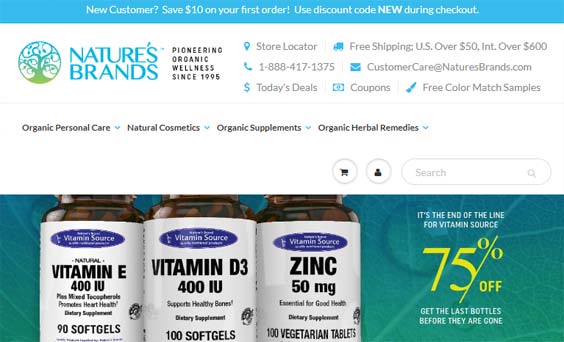Google My Business frequently defies logic when it comes to ranking factors for local businesses. In this blog post, I will discuss the ranking factors we’ve investigated for both mobile devices and desktop.
The team at ThoughtShift are continuously looking to research and test what exactly makes Google tick. We therefore, carried out a few tests to determine what’s going to get us the best results. So what exactly is going to help those all-important listings for local businesses? The test was to understand how important certain aspects of a Google My Business listing are by optimising different listings for different key pieces of information required by Google. We then analysed the results, looking at where the listing gets displayed and when a listing shows in search results to determine how important each aspect is.
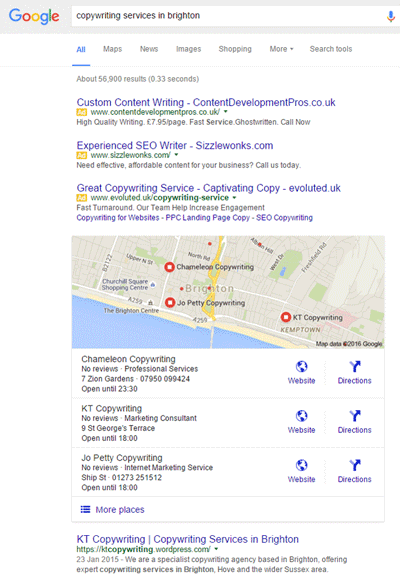
The ThoughtShift Test
Understanding the search queries that display the 3-pack results in search.
The test consisted of us creating 3 different listings dotted around Brighton and Hove. Each listing was optimised slightly differently in order for us to test different aspects of the sections Google requests you to complete.
Our test looked at “Copywriter Brighton” and “Copy Writing Brighton” both with search volume, but not a lot of competition. When searching for various keyword variations, we found that different companies were brought up in different orders depending on the keywords they were optimised for within their Google My Business descriptions.
Top Tip: When deciding on what local keywords to target, although some keywords have larger search volume without the “in”, it is worth looking at all variations as there may be quicker wins with local search that will get you to the top quicker.
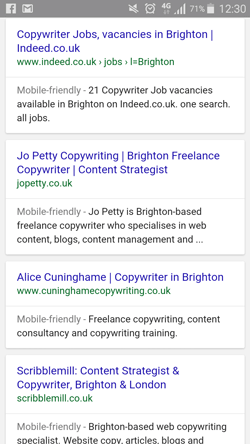
Mobile Ranking Factors
Last year, Google demanded that all businesses have a mobile-friendly website. Many businesses that didn’t provide users with a good mobile experience saw significant drops in their mobile search results. Following the mobile update, Google started to show users a notification in SERPs to say if a site was “Mobile Friendly” or not. There are many Google ranking indicators, however when doing our local test, we found that having a mobile-friendly website was one of these factors.
5 Key Ranking Factors for Mobile:
1. A mobile friendly/responsive website will help your business listing show in mobile results.
2. Proximity: The location of the searcher is still a major factor in local rankings. More “Near me” and location based services searches are being made as users look to find something within close proximity. Even searches made for “Copy writer in London” shows shops closest to the pin point that Google marks as the central of the city/area searched for.
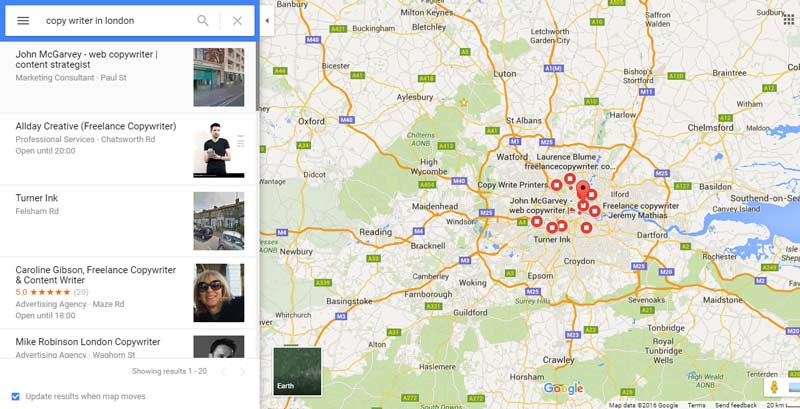
3. The telephone number is another key for local businesses on a mobile device owing to the fact that Google only displays the telephone click to call feature in search results. For desktop, Google displays the website and directions features. Some businesses can do without it, but why waste the chance to get interaction from a customer by not providing a valid telephone number?

4. Reviews are a constant ranking feature on Google My Business. However, most businesses still find it difficult to get reviews on listings. Incentives are a good way of getting reviews from customers, such as offering a small discount if you are a shop or a free drink at a restaurant.
5. Opening hours are getting more important for local. Google have now added the ability to add in special opening hours on bank holidays and other specific dates.
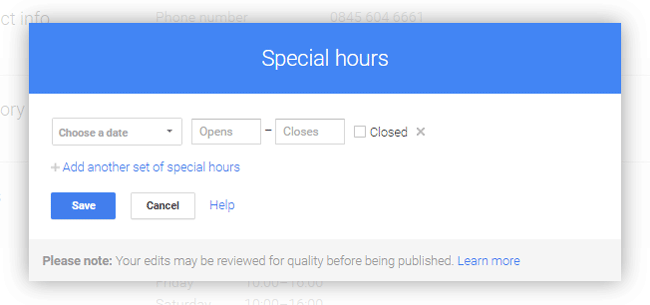
Desktop Ranking Factors
Getting your local listing on desktop search is getting more and more competitive. Due to Google using more methods to collect information about a business, local businesses need to keep up with local ranking factors to ensure they get the footfall to their shop, restaurant or business. You can now use local structured data schema mark-up to tell Google the key details about your business. Google also experiments with Google Local Business Cards to give users information quicker.
5 Key Ranking Factors for Desktop:
1. Make sure your NAP (Name Address and Phone Number) is consistent across all websites and directories you are listed on. You should write your brand name in exactly the same way across the Internet in order for Google to relate any citations or mentions of your brand name back to your website and your Google My Business listing.
2. Add operating hours to your listing to give customers more information on when they can reach or visit you.
3. Use relevant keywords within the description of your listing that you want to appear for in local search to help enforce what your business is about.
4. Make sure the category is relevant to your business. Google now prefers just one ‘Primary’ category, even though you can add up to 5, so make sure the key one represents your business as a whole.

5. Desktop results also display the directions to and from your business address. In order for this to display, you need to ensure your address is correct and you have ticked the little button saying “I also serve customers at my business address”.
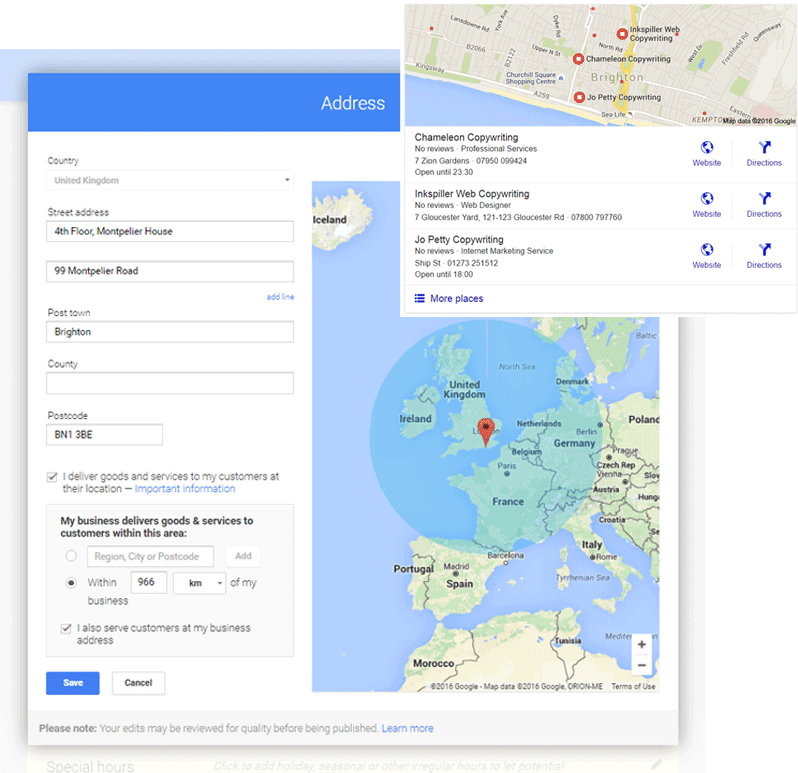
In Summary
Optimise your local listing with all the information required by Google to make your listing profile 100% complete. This will be the best way in which you can get those top 3 positions. If you are still not in your desired position, look to engage with your profile and get reviews from your customers.
- Keep your listing up-to-date with opening hours and special hours when bank holidays come up
- Incentivise customers to leave you reviews
- Ensure that your brand name is consistent across the web
- Make sure your website is mobile friendly
Follow our blog to learn more about search engine optimisation, or sign up to the ThoughtShift Guest List, our monthly email, to keep up-to-date on all our blogposts, guides and events.




